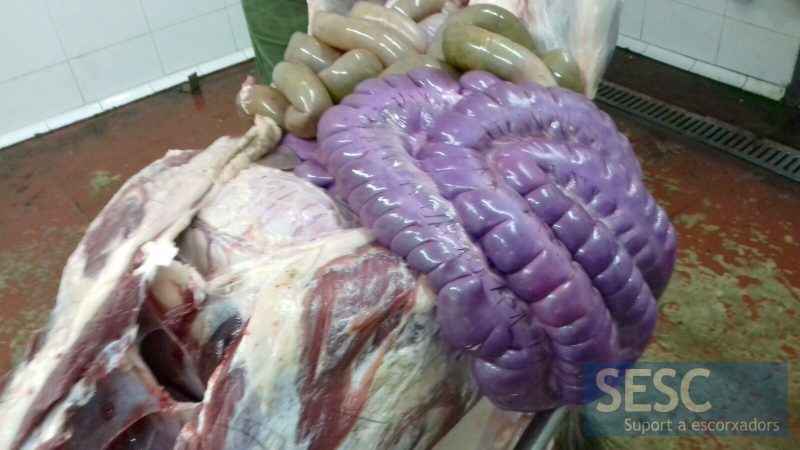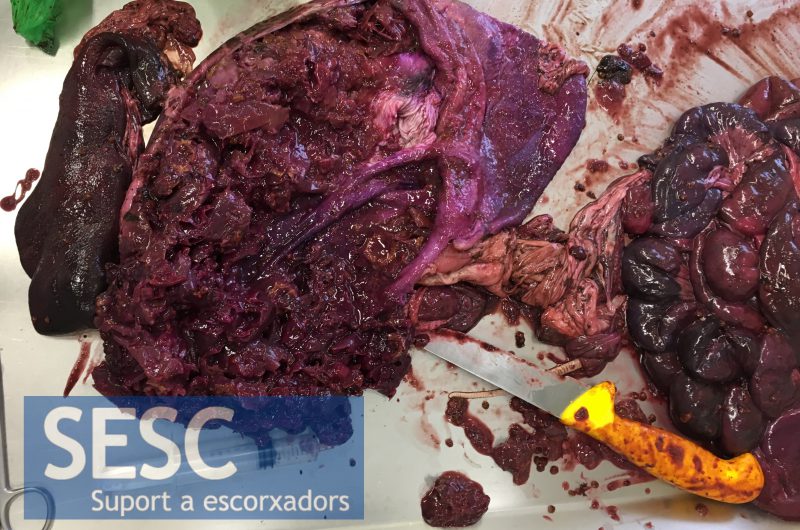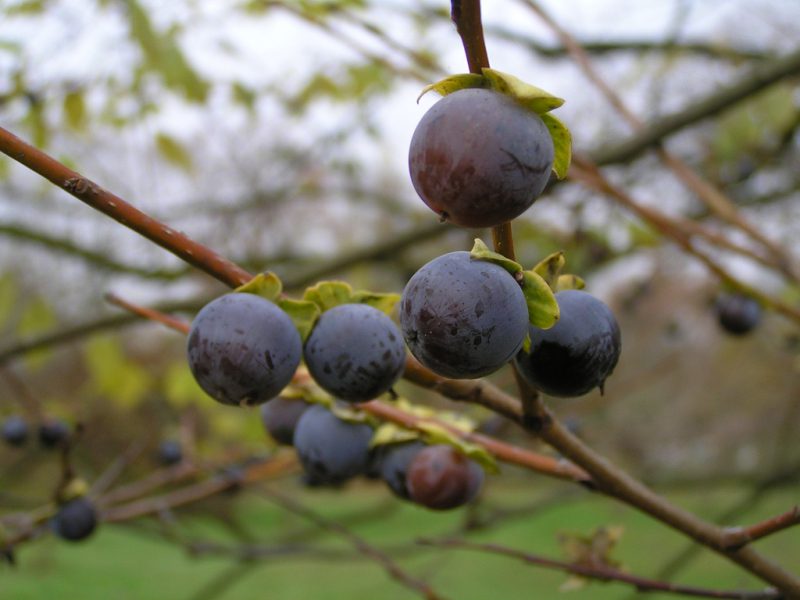Purple coloured large intestine wild boars
Through game meat processing establishments images were submitted of wild boars captured in the Alt Emporda region in Catalonia with an intense purple coloration of the large intestine.
Without being able to study any samples or observe the contents and appearance of the mucosa, the first hypothesis that pathologists evaluated was that it was a haemorrhagic lesion.

Wild boar carcass with a strong purple coloration of the large intestine.
Finally the occasion came to study a carcass, also fom Alt Emporda, with the same alteration. When the gastrointestinal tract was examined, no signs of bleeding were observed. Instead, the cecum, stomach and intestines were filled with intense purple colored vegetable debris, that pigment dyed purple the mucosa and serosa of the intestines. There were also a lot of small, about the size of a lentil, hardened and woody seeds.
Samples were collected and the content were analyzed in the area of Animal Production, Faculty of Veterinary Medicine at the UAB who concluded that it consisted of the remains of Diospyros spp. fruits, most likely date-plum tree fruits (Diospyros lotus), a tree that gives fruits similar to the persimmon but smaller and can be lilac-hued colored when they are ripe and fall to the ground.

Stomach contents of wild boar, the mucosa is pigmented purple.

Ripe date-plum fruits (Diospyros lotus). Image: Patrick Nicolas.


1 comment(s)
From our twitter account (@CReSA_r) an expert in botanics @joanfontgarcia suggests it also might be that the animals were feeding on Opuntia stricta fruits a common species in the region were the animals were captured.